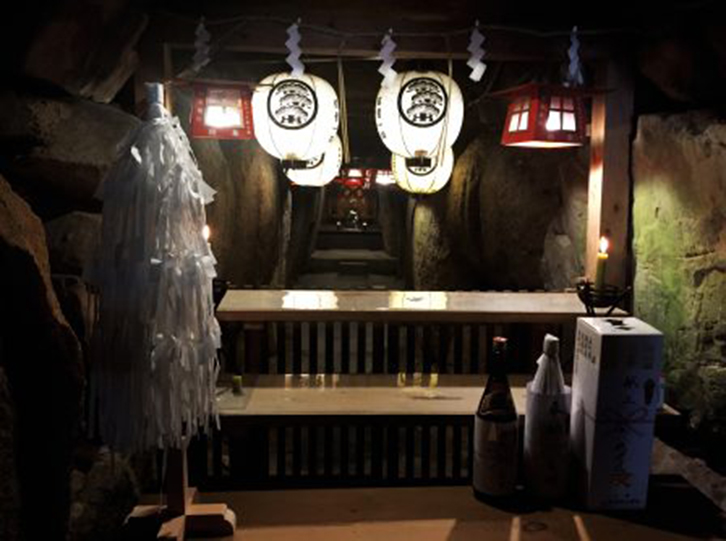
Religion and archaeology combined inside the Miyajigadake mounded tomb in Kyushu – Photo by Simon Kaner
Carmen Blacker Lecture 2019: Dragon Bones, Sacred Pillars and Holy Tombs: Some Archaeological Observations on Traditional Japanese Religion – with Professor Simon Kaner
- 22 July 2019
- 6:45pm
- The Swedenborg Society, 20-21 Bloomsbury Way (Hall entrance on Barter St), London WC1A 2TH
- https://www.japansociety.org.uk/event/simon-kaner/
- 020 7935 0475
- events@japansociety.org.uk
- Tweet
The 2019 Carmen Blacker lecture will consider the relationship between myth and archaeology in Japan through two case studies: a thrilling festival in Nagano and a Museum in Shimane.
The Carmen Blacker Lecture Series honours the memory and scholarship of Carmen Blacker (1924-2009) and is organised jointly by the Sainsbury Institute for the Study of Japanese Arts and Cultures and the Japan Society. Each year a senior scholar is invited to speak on a theme related to Blacker’s research in the area of Japanese religion and folklore. For this year’s tenth lecture we are delighted to welcome Simon Kaner, Executive Director of the Sainsbury Institute for the Study of Japanese Arts and Cultures.
The onbashira festival takes place every six years in the area around Lake Suwa in Nagano prefecture. It involves the cutting down of huge cedar trees which are then ridden down the steep mountain slopes, eventually being set up in the sacred precincts of the Suwa Grand Shrine. It is one of the most exciting and more perilous of the Japanese festivals. Aspects of the festival are used in the interpretation of prehistoric wooden circles from the Jomon period. We will consider the rationale behind these analogies.
The second example is from the Izumo region, a land full of myths and legends that feature large in the Kojiki (Record of Ancient Matters). A visit to the Ancient Izumo Museum indicates that myth and archaeological interpretation are closely intertwined. Once again we will give some careful consideration to the relationship between myth and sacred heritage with a few comparative examples from other parts of the world. We will end with some thoughts on the perceived need for contemporary beliefs to be legitimated through the use of history and archaeology, and a brief visit to the mounded tomb at Miyajigadake in Fukuoka prefecture.
Professor Simon Kaner is Director of the Centre for Japanese Studies at the University of East Anglia and Executive Director of the Sainsbury Institute for the Study of Japanese Arts and Cultures, where he is also Head of the Centre for Archaeology and Heritage. He is an archaeologist specialising in the prehistory of Japan. His recent publications include An Illustrated Companion to Japanese Archaeology (edited, with Werner Steinhaus) (Oxford, Archaeopress, 2016) and he is currently editing the Oxford Handbook of the Archaeology of Korea and Japan. He is Co-Editor of the Japanese Journal of Archaeology, Series Editor for the Archaeopress series Comparative Perspectives on Japanese Archaeology and Series Co-Editor for the Springer series The Science of the History of Humanity in Asia and the Pacific. He is currently directing a project on Global Perspectives on British Archaeology and is developing new exhibitions for 2020 at the Sainsbury Centre for Visual Arts at the University of East Anglia comparing the appearance of Buddhism in Japan and the adoption of Christianity in northwestern Europe – the arrival of world religions at the extremities of the Silk Roads, and for the Stonehenge World Heritage Visitor Centre on Stonehenge and Japan.
This lecture will also be given on Thursday 18 July under the auspices of the Sainsbury Institute for the Study of Japanese Arts and Cultures in the Weston Room, Cathedral Hostry, Norwich. For more information and to book the Norwich lecture please click here (full details coming soon).
To reserve your place, please call the Japan Society office on 020 3075 1996, email events@japansociety.org.uk or submit the online booking form.
Free – booking recommended
Book online here
